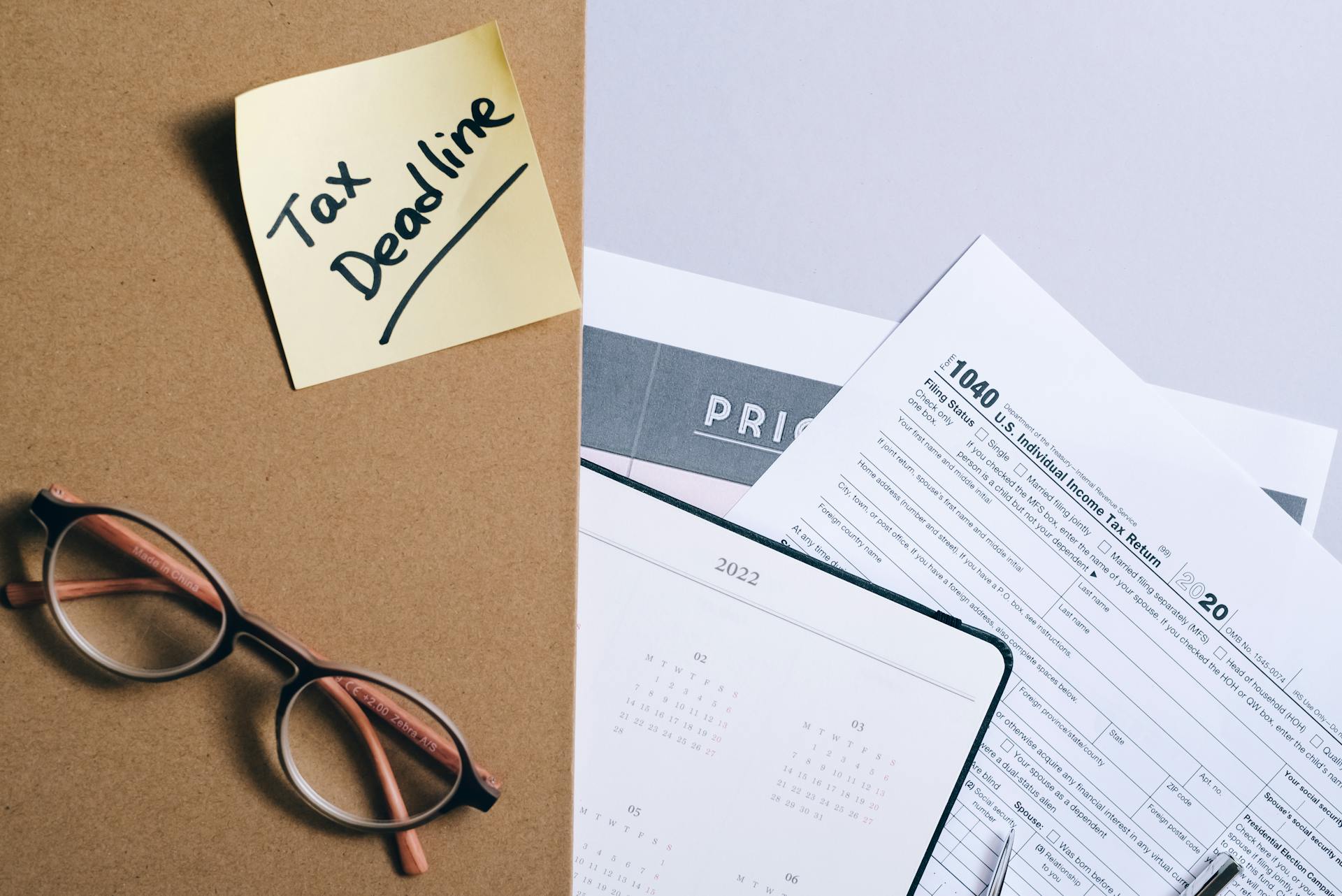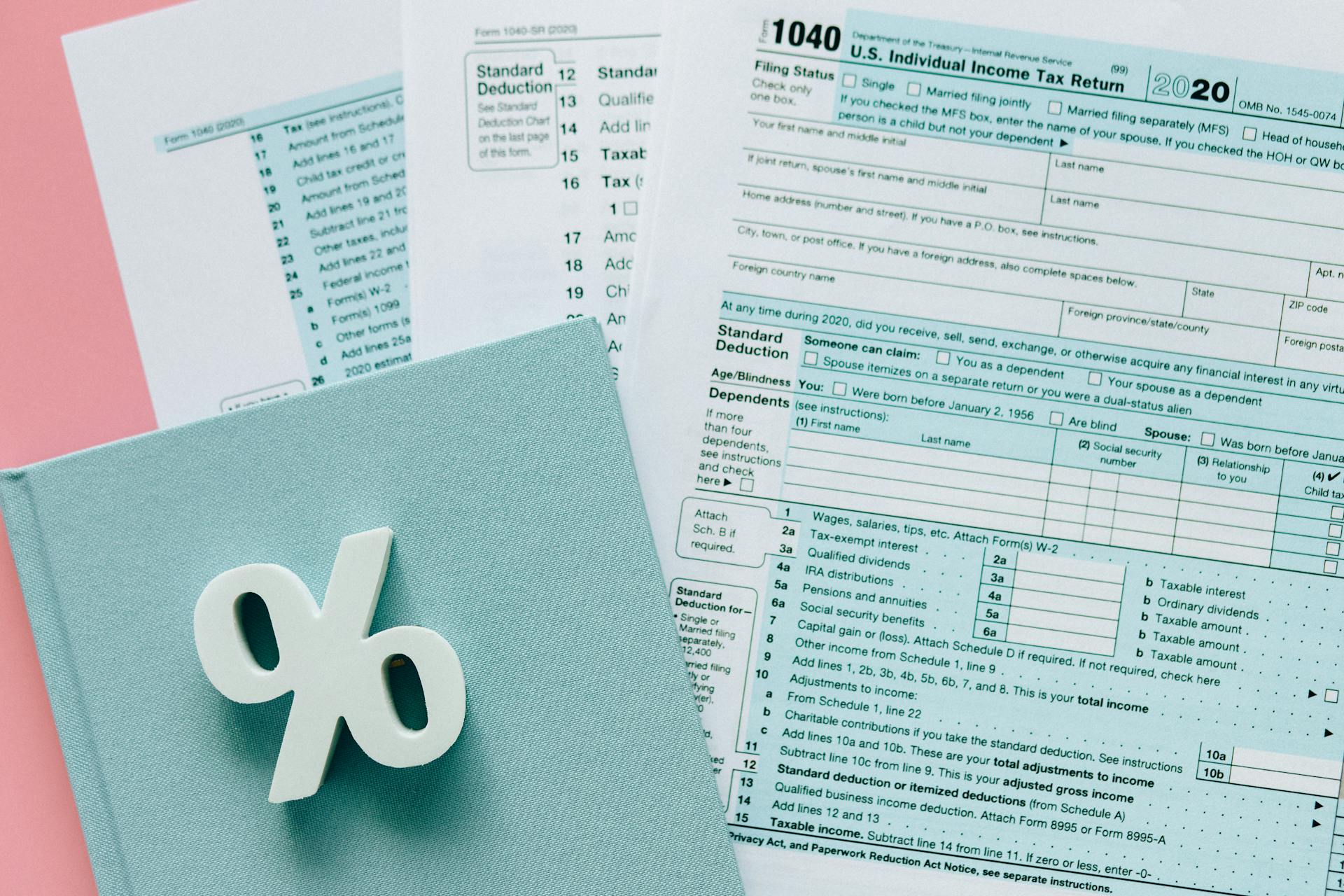
Junk bonds have a lower credit rating than investment-grade bonds. This means they're considered riskier investments.
They often have higher yields to compensate for the increased risk. Investors may be drawn to these higher returns, but it's essential to consider the potential downsides.
Junk bonds typically have a higher interest rate than investment-grade bonds.
Here's an interesting read: Are Series I Bonds a Good Investment
Explained
Junk bonds are very similar to regular corporate bonds, but differ due to their issuers' poorer credit quality.
Bonds are fixed-income debt instruments that corporations issue to investors to raise capital, essentially loaning money to the issuer who promises to repay the money on a specific date called the maturity date.
At maturity, the investor is repaid the principal amount invested. Most bonds pay investors an annual interest rate during the life of the bond, called a coupon rate.
For example, a bond with a 5% annual coupon rate means that an investor who purchases the bond earns 5% per year. A bond with a $1,000 face value will receive 5% x $1,000 which comes to $50 each year until the bond matures.
Additional reading: High Interest Rate Investment
Key Features
Junk bonds have a distinct set of features that set them apart from other types of bonds.
Junk bonds are debt securities that have been given a low credit rating by a ratings agency, below investment grade.
These bonds are riskier because the chances of the issuer defaulting or experiencing a credit event are higher.
To compensate for this higher risk, junk bonds offer higher interest rates to attract investors.
The credit rating of junk bonds indicates the likelihood that the issuer will default on the debt.
Junk bonds are generally rated BB[+] or lower by Standard & Poor's and Ba[1] or lower by Moody's.
Here's a comparison of the two rating systems:
Investors can also consider a high-yield bond fund as an option for investing in junk bonds, which can provide a diversified portfolio and reduce individual risk.
Credit and Ratings
Junk bonds are rated by credit agencies like S&P, Moody's, Fitch, and Morningstar DBRS to help investors assess their risk.
These agencies use different labels, but they all follow a similar pattern. Bonds in the "B" range have a higher default risk than investment-grade bonds, but they're not the riskiest.
Moody's, S&P, Fitch, and Morningstar DBRS all have their own credit rating scales. Here's a comparison of their scales:
A "C" rating indicates a higher risk of default, while a "D" rating shows that the bond may have already defaulted.
Pros and Cons
Junk bonds can be a good way to diversify your portfolio, but they're not for everyone. Consider these pros and cons when deciding whether to invest.
Junk bonds offer higher yields, with interest rates higher than their investment-grade counterparts. This is because they're riskier, but investors are rewarded with higher returns.
You can expect consistent cash flow from junk bonds, as they're not as volatile as stocks. This makes them a good choice for those seeking stable returns.
Bonds offer a way to diversify your portfolio away from just stocks, and they may perform differently in different market environments. This can help you ride out market downturns.
Junk bonds have a higher risk of default, with a default rate of 5.5% in 2020 compared to 0.00% for investment-grade bonds. This is a significant consideration for investors.
Liquidity can be a problem with junk bonds, as they may not trade as frequently as investment-grade bonds. This can make it harder to sell your bonds quickly or without taking a discount.
Investing in individual junk bonds requires analyzing the company, making it riskier than buying a fund with a diversified collection of junk bonds.
Here are the key pros and cons of junk bonds:
Real World and Examples
Real-world examples of junk bonds are often found in companies with high debt levels and low credit ratings. Tesla Inc. issued a fixed-rate bond with a maturity date of March 1, 2021 and a fixed semi-annual coupon rate of 1.25%.
The bond received an S&P rating of B- in 2014, which indicates a high risk of default. This rating was later upgraded to BB- in 2020, but still falls into junk bond territory.
The current price of the Tesla bond is $577, which is much higher than its face value of $100. This indicates that investors are willing to pay a premium for the bond due to its potential for high returns.
What Is an Example?
In the real world, junk bonds are often misunderstood. A junk bond is essentially a bond with a low credit rating.
Moody's, a reputable credit rating agency, defines bonds with ratings of Ba and lower as junk bonds. Similarly, S&P Global considers bonds with ratings of BB and lower to be junk bonds.
Bonds with these ratings are considered high-risk investments. This means that investors who purchase these bonds may not get their money back if the issuer defaults.
For more insights, see: Etf Junk Bonds

Let's take a look at some examples of junk bonds. According to Moody's, bonds with ratings of Ba and lower are considered junk bonds.
Here are some examples of junk bond ratings from Moody's and S&P Global:
It's worth noting that these ratings can change over time. For instance, a bond that was once considered a low-risk investment may be downgraded to a junk bond rating if the issuer's creditworthiness declines.
Real World Example
Tesla Inc. issued a fixed-rate bond with a maturity date of March 1, 2021 and a fixed semi-annual coupon rate of 1.25%. This bond received an S&P rating of B- in 2014.
The S&P rating of B- means the bond is considered high-risk, but the rating was upgraded to BB- in October 2020, indicating a slightly lower risk.
The bond is still considered a junk bond, but the upgrade in rating suggests it's less vulnerable to nonpayment. In fact, the bond is trading at a very large premium to its face value.
As of October 2020, the bond's current price is $577, much higher than its 2014 face value of $100. This is because the bond is convertible to equity.
Tesla's shares soared 600% in the twelve months ending October 26, 2020, making the bond a valuable surrogate for equity.
Takeaways and Information
Junk bonds have a lower credit rating than investment-grade bonds, and therefore have to offer higher interest rates to attract investors.
These bonds are considered riskier, with a higher likelihood of the issuer defaulting on the debt.
A junk bond is typically rated BB[+] or lower by Standard & Poor's and Ba[1] or lower by Moody's, indicating the issuer's creditworthiness.
To mitigate the risks, investors can consider a high-yield bond fund, which pools together individual junk bonds for a more diversified portfolio.
Here are some key characteristics of junk bonds:
- Debt with a low credit rating, below investment grade
- Riskier than investment-grade bonds, with a higher chance of default
- Offer higher interest rates to compensate for the increased risk
Featured Images: pexels.com


